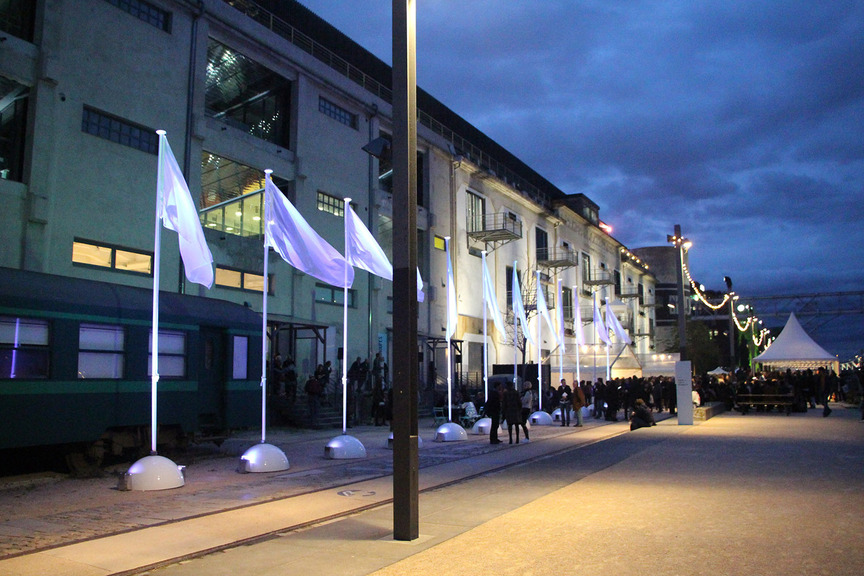
R
E
V N
E
X
T
It’s easy to get lost in art while exploring the three works by ERNESTO NETO that occupy almost the entire second floor of the Lyon Museum of Contemporary Art for the 14th Biennale de Lyon. All images by Andrew Stooke for ArtAsiaPacific.
The arms of the rivers Rhône and Saône embrace Lyon. Calm and deep, the water is in tune with artworks shown in the city’s 14th biennial festival that often, beneath shimmering surfaces, express ominous danger. In the four concurrent programs that make up “Mondes Flottants” (or “Floating Worlds”), the overarching theme is of floating as a charmed but precarious state—perhaps a prelude to drowning. For the biennial, Emma Lavigne, who is director of Centre Pompidou-Metz, curated an exhibition in two venues, La Sucrière and Lyon Museum of Contemporary Art; “Rendez-vous” was a separate exhibition for emerging artists; “Veduta” was a series of dialogue events involving people outside the central Lyon conurbation; and a network of heterogeneous exhibitions took place under the title “Resonance” in the Auvergne-Rhône-Alpes region.
The two main venues, each facing a different river, are filled with howling and rumbling drones, as well as lilting sonorities. Sound and movement augment many works. These characteristics are employed to express disquiet, instability and the hint of a hidden threat.
France-based Chinese artist duo Hao Jingfang & Wang Lingjie brought their light-refracting installation Over the Rainbow (2016) to the biennial; it epitomizes a sense of fragility that appears in many other creations that were presented. On first appearance, Hao and Wang’s installation looks like a pristine mud flat exposed only when the tide recedes. From certain angles, we see an iridescent rainbow fluttering over its surface, drawing the spectator to the very edge of the work to get a better view (one step further and they would trample over the pure surface left by the artists). The illusion is produced from a combination of artificial light and the optical qualities of the work’s granular prismatic material. The beauty appears simple and delicate, like lotus pollen dancing in light beams, but it is precarious, reliant on the chance confluence of a natural effect and electric light, mediated by the viewer’s relative position. To catch a glimpse of its transitory manifestation, this rainbow demands exact alignment.
Lavigne, the biennial’s curator, suggests that we should seek safe harbors, but the displayed artworks do not posit safe and enduring refuges. Instead, they reference the need for precise and cautious navigation and imply that we are too far out already to heed the ominous warning of a coming storm. Here are the highlights from the 14th Biennale de Lyon.
The 14th Biennale de Lyon is on view until January 7, 2018.
To read more of ArtAsiaPacific’s articles, visit our Digital Library.




